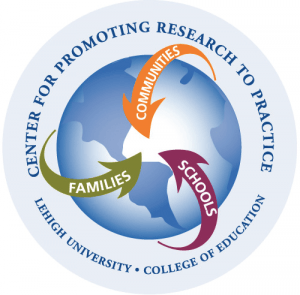Promoting Positive Teacher-Student Relationships
What is the Intervention?
This intervention is a classroom management intervention aimed at creating and fostering positive relationships among teachers and students.
Who is it for?
Students of all ages
Purpose
Positive interactions between teachers and their students play an important role in student success. Research shows that increasing positive interactions (e.g., praise, supportive statements) and decreasing negative interactions improves the classroom climate as well as student academic and behavioral outcomes. In general, a positive relationship with teachers boosts student motivation and cooperation. Interacting with students in a positive way teaches students valuable interpersonal skills as well. The ratio of positive to negative or corrective teacher statements to students should be at least 4:1.
Background Information
Increasing praise statements to acknowledge appropriate behaviors, using error correction procedures to address misbehavior, and practicing active supervision (e.g., circulating, scanning, encouraging) are strategies teachers can employ to improve student-teacher interactions. Providing choices can also help to improve relationships with students as it gives them a sense of control and may reduce challenging behaviors.
Improving interactions with students will take time and practice! Increasing positivity will improve student behavior and may improve teacher outlook as well.
Following are examples of the three types of feedback that can be given to students:
Praise Statements: Using the student’s name when making praise statements personalizes the message. Remember to state the specific desirable behavior exhibited by the student. “You did a great job participating in class today, Alex. Keep up the great work!”
Corrective Statements: “Please remember to raise your hand to share your answer.” “Please use a quiet voice like mine so I can understand better what it is that you need.”
Negative Statements: Should be avoided. “You’re late.” “You’re not listening again.” “Only stupid people do that.”
Materials Needed (See Attached Materials)
- Teacher- Student Relationship Reference Guide
Steps to Intervention
- Increase praise statements and begin employing instructive feedback when interacting with students. Decrease the number of negative statements when interacting with students.
- Use the tips to enhance positive teacher-student interactions.
- Active Supervision: Active supervision promotes the development of a positive classroom climate by proactively encouraging and maintaining student on-task behaviors. Active supervision of students is characterized by patterns of teacher movement and high rates of positive interactions with students, including praise statements and instructive feedback.
- Circulating: Circulation in the classroom provides teachers increased opportunities to praise students for on-task behavior, provide instructive feedback, and offer encouragement. Teachers should use proximity to check in with students during independent and group work.
- Scanning: Frequent visual scanning of the classroom environment is a good way for teachers to observe student behavior related to expectations and routines. General statements of praise or error correction can be made: “I really like how everyone is on task right now. Great work!”
- Encouraging: Provide encouragement when students are struggling or have completed a task. Also, encourage students to encourage each other! Then be sure to provide students with the appropriate supports (e.g., accommodations) to increase success.
- Choices: Providing choices can help redirect undesired behavior and create an opportunity for praise and/or encouragement. When students make good choices, remember to reinforce the appropriate behavior to increase the likelihood that students will repeat the desired behavior. “I see you have not started your math work. Would you like to use scrap paper or graph paper to help you figure the problems?”


